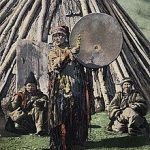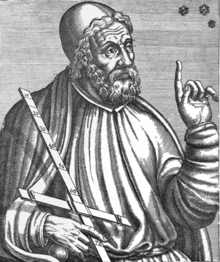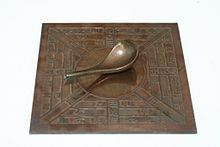Survey 2, God and Gutenberg: A Summary
In this survey we reviewed the history and advancements of what is known as the Medieval period (0-1450). The people of the European and Arabic world began in this time to discard polytheistic religions in favour of monotheistic ones. Christianity, Judaism and Islam rise and Armenia is the first to adopt one of these, Christianity, as a state religion. Much of the discovery and advancement we discussed revolved around paper and writing, and the somewhat sluggish sharing and propagating of these ideas especially between Eastern Asia and Western Europe. While in China paper which had already been invented was used to create books, in Europe and the Middle East the use of Egyptian paper was gradually discontinued and replaced in the second century with expensive parchment. Made from animal skin and less brittle than papyrus, parchment was used to create vertical scrolls and eventually bound books known now as codices or illuminated manuscripts. However, these were few and far between as they were expensive, took laborious work to create as they were written by hand, and were usually written in Latin (In Europe). The majority of the population being illiterate, few had access to these precious items. Some of these codices include the Vergilius Augusteus and the Book of Durrow. Codices were also created at the same time in Mayan civilization, though only three of these books remain today. Something I found fascinating was the evolution of handwriting styles during this time. Along with the translation of manuscripts and codices into the Medieval peoples’ common languages, lettering evolved not only for stylistic effect but also for practicality. Style of illumination or illustration of these codices varied and changed according to culture and situation as well, and the invention of block printing changed the fabric and clothing making industry as well as the illumination practice. With the reinvention of the printing press by Gutenberg in Germany, long after that of Bi Sheng in China, the era of codices gradually came to an end to be replaced with printed books as we know them now.
The Middle Ages: China and the Middle East Prove to Lead in Scientific and Technological Advancements while Europe just kind of Follows Along
An oversimplified view of the Middle Ages often results from a predominantly Eurocentric historical account. In fact, five great civilizations, writing in five different languages, make up the bulk of the history of medieval mathematics and science. These include China, India, Arabia, the Eastern or Byzantine Empire with Constantinople at its centre, and the Western or Roman Empire.
Human societies around the world had traditions of thought about nature. However, the concept of “science” as we know it had yet not fully emerged in medieval times. Science was one with magic or religion in most cultures and groups. In many societies, healing was considered to be closely connected with the powers of wizards, shamans or holy people. In Christian Europe, studies of natural philosophy even in universities were closely tied with the church. The goal of these studies was foremost to illuminate the glory of God.
So at this time, science hadn’t yet really severed its links with magic. Astronomy was still tied to astrology, and it was believed that physicians should schedule medical treatments for the astrologically correct time. Chemistry, known as “alchemy” usually involved experiments alongside magical rituals, and this type of practice was generally frowned upon by Christian and Islamic authorities.
The closest relative to science as we know it today existed mostly in China, and to some small extent in the Islamic and Christian worlds, where researchers in science and medicine received some of the knowledge of classical Greece. Arab philosophers and scientists were the most intent followers of Greek advancement in the early Medieval age. They began the study of optics, as well as advanced mathematics, astronomy, medicine and other disciplines. Their work had impact on the Latin Christian world, where works were translated from Arabic into Latin, and India, where the arabic advancements helped create their own medical tradition. Through the Arab world the Indian numeral system was adopted and spread to Europe, where it virtually replaced the Roman numeral system in the practices of science.
While the European, Middle Eastern and North African cultures did build on the Ancient Greek school of thought, they did not go as far as challenging its fundamental assumptions. The ancients— Ptolemy in astronomy, Aristotle in physics, and Galen in medicine— held a kind of untouchable authority over their respective disciplines even after their systems were modified substantially by the late medieval physicists of Oxford and Paris who introduced new ideas about motion and mathematical treatments that would later have influence over Galileo.


The ideas of Ancient Greek thinkers were usually challenged or denied when they were incompatible with the monotheistic religion descended from Abraham. Old ideas which challenged the belief in the creation of the world and universe by a single all-powerful God were rejected. This demonstrates the important grip religion still held on medieval science. However, its influence also motivated scientists and thinkers to accomplish tasks which would require advancement. Christians studied astronomy to determine the correct date of Easter, and Muslims further developed cartography as well as trigonometry to establish the direction of the Mecca towards which they would orient themselves in prayer.
Meanwhile in China and Eastern Asia, the invention of paper, block printing, the moveable type, gunpowder, fireworks, the compass and eyeglasses as well as many other technological, medicinal and scientific advancements were being achieved independently from Europe.


Works Cited:
A History of mathematics, second edition
Carl B. Boyer, UTA C. Merzbach
Wikipedia, European Science in the middle Ages: https://en.wikipedia.org/wiki/European_science_in_the_Middle_Ages
Wikipedia, Science in the Medieval Islamic World: https://en.wikipedia.org/wiki/Science_in_the_medieval_Islamic_world
Wikipedia, History of Science and Technology in China: https://en.wikipedia.org/wiki/History_of_science_and_technology_in_China
The Advances and Limits of Medieval Science
from World History Encyclopedia
Wikipedia, Ptolemy: https://en.wikipedia.org/wiki/Ptolemy
Wikipedia, History of the Compass: https://en.wikipedia.org/wiki/History_of_the_compass
Wikipedia, Alchemy: https://en.wikipedia.org/wiki/Alchemy
Wikipedia, Shamanism: https://en.wikipedia.org/wiki/Shamanism